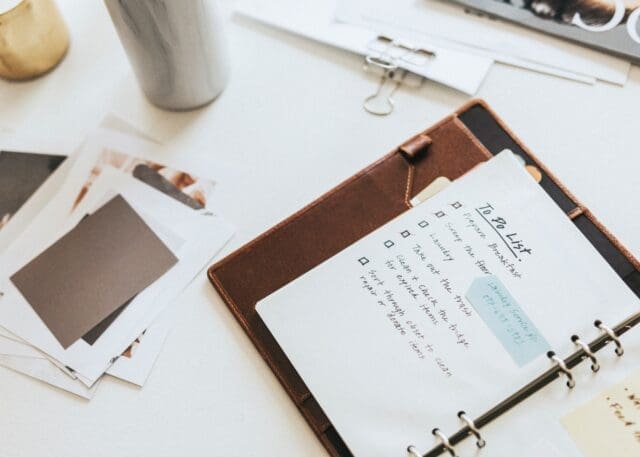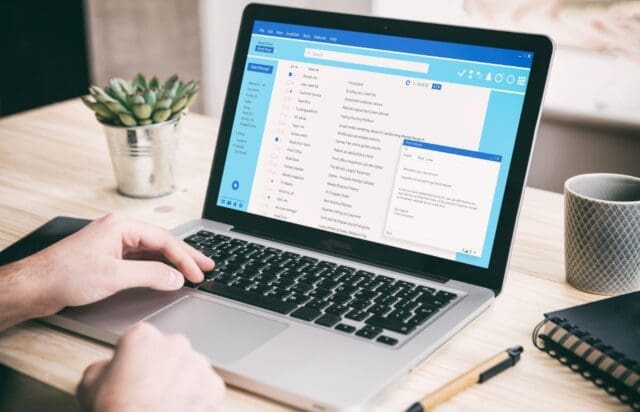How To Avoid Online Distractions And Focus On Work

Working from home can be a dream come true for many people, but it can also be a double-edged sword. On one hand, you get to avoid the daily commute and have more flexibility in your schedule. On the other hand, you have to deal with the distractions that come with working from home.
The internet is a vast and tempting place, and it’s easy to get sidetracked by social media, cat videos, and online shopping. Trust me, I have been there. One minute, I am looking at cute pet videos, and the next minute, I am in an online retail store looking at toys for my pets.
If you’re a freelancer, self-employed, remote worker, or enjoying a hybrid working system and struggling to navigate the digital minefield, fear not! In this article, you will get insights into tips and tricks to help you avoid online distractions and focus on work.
Tips To Avoid Online Distractions And Focus On Work
Remote work has become the norm, a canvas where your office space merges with your living space. Yet, amidst this convenience lies a plethora of distractions.
Whether it’s your constant access to the internet or constant noise in your home, here are some of the best tips to help you avoid online distractions.

Create a Dedicated Workspace
The first step to avoiding online distractions is to create a dedicated workspace. This could be a spare bedroom, a corner of your living room, or even a closet that you convert into a mini-office.
The key is to have a space that you associate with work — one that is free from distractions like the TV or your kids’ toys.
Most importantly, organize your working space! Adorn it with the tools of your trade, and let it exude productivity vibes. A clutter-free and ergonomic setup is your ticket to a distraction-free zone.
Set Boundaries
When working from home, it’s easy to blur the lines between work and personal time. This can lead to you spending more time online than you should and getting distracted by non-work-related activities.
To avoid this, it’s important to set boundaries. This could mean turning off your phone during work hours or using a browser extension to block certain websites during work time. It can also mean having clear rules with your loved ones about invading your space when you are working.
Use Productivity Apps
Productivity apps serve as your personal assistants, streamlining your workflow and minimizing distractions. They offer a range of features, from to-do lists and task management to time tracking and habit formation.
By organizing your tasks, setting deadlines, and tracking your progress, these apps help you stay on top of your work and avoid getting sidetracked by digital temptations.
There are plenty of productivity apps out there that can help you stay focused and avoid distractions.
Some apps excel in task management, while others focus on time tracking or habit formation. Whatever option you settle for, don’t forget to read reviews, explore free trials, and ensure the pricing isn’t out of your budget range.
When looking for productivity apps, consider their ability to align with your work style and needs. Look for features like task categorization, deadline reminders, and integrations with other tools you frequently use.

Set Realistic Goals and Priorities
Start your day by setting realistic and achievable goals. To effectively set realistic goals and prioritize tasks, consider these strategies:
- Identify your big-picture goals – begin by identifying your overarching goals, i.e., the aspirations that drive your work. These goals should be specific, measurable, achievable, relevant, and time-bound (SMART).
- Break down your goals into smaller tasks – dividing your big-picture goals into smaller ones makes them more manageable. This approach makes the work seem less daunting and provides a clear roadmap for accomplishing your objectives.
- Prioritize tasks based on their importance – evaluate each task and assign it a priority level, considering its urgency and importance to your overall goals. Prioritize high-impact tasks and schedule them accordingly.
- Schedule realistic time estimates – allocate realistic time estimates to each task, considering their complexity and workload. It helps you maintain a manageable schedule and avoid overcommitting your time.
- Regularly review and adjust your priorities – as your workload and priorities evolve, regularly review and adjust your tasks. This ensures that you are focusing on the most important tasks at hand.
Embrace Time Blocking
Consider this your divide-and-conquer strategy. Time blocking involves dividing your workday into specific time blocks dedicated to specific tasks.
Dividing your day into specific time blocks dedicated to specific tasks enables you to reduce distractions, enhance focus, and achieve your goals with greater efficiency.
Take Breaks
Taking regular breaks is important for maintaining focus and avoiding burnout. However, it’s important to make sure that your breaks don’t turn into distractions.
One way to do this is to set a timer for your break and use that time to do something that will refresh your mind, like going for a walk or doing some stretching exercises.
Practice Mindfulness
Mindfulness is a technique that involves being fully present and engaged in the moment. It can be a powerful tool for avoiding distractions and staying focused on your work.
One way to practice mindfulness is to take a few deep breaths and focus on your breath for a few minutes. This can help you quiet your mind and stay centered, even when you’re surrounded by distractions.
Another strategy for practicing mindfulness is focusing your attention on one task at a time. By immersing yourself fully in the present activity, you ward off distractions that vie for attention, fostering heightened productivity.
It also helps to practice mindful task switching. When transitioning between tasks, take a moment to pause and reset your focus. Mindfully acknowledge the shift in activities to maintain continuity and prevent distractions from lingering.
Mindfulness techniques create mental resilience, enabling you to redirect attention from distractions back to the task at hand. Over time, these practices strengthen your concentration, bolstering productivity by minimizing the allure of diversions that typically derail workflow.

Dedicate Time for Your Emails
The incessant ping of new emails, the urgency to respond, and the temptation to check non-work-related messages can quickly derail your productivity, transforming your workflow into a chaotic dance of interruptions.
To silence the email notification monster and reclaim control of your digital environment, consider these strategies:
- Schedule Email check-ins – instead of constantly checking your inbox, designate specific times throughout the day to review and respond to emails. This approach helps you focus on one task at a time and avoid the constant pull of new messages.
- Disable non-essential notifications – turn off notifications for unimportant emails, such as newsletters, social media updates, and promotional messages. This reduces the clutter and allows you to prioritize urgent and work-related emails.
- Utilize email rules – set up email rules to automatically filter and organize incoming messages. This helps you prioritize important emails and avoid distractions from less urgent messages.
- Experiment with batch processing – consider batch processing emails, dedicating specific time blocks to processing and responding to emails. This approach helps you maintain focus and avoid getting overwhelmed by a constant stream of new messages.
- Communicate Email expectations – clearly communicate your email availability to colleagues and clients, setting expectations for response times and working hours. This helps manage expectations and reduce the pressure to respond immediately.
- Use templates and drafts – create templates for recurring responses or frequently asked questions. Similarly, use drafts for emails that require more thought or information, allowing you to revisit and refine them later.
- Unsubscribe and Declutter – regularly unsubscribe from newsletters, promotional emails, and subscriptions that no longer serve your professional needs. A clutter-free inbox minimizes distractions and makes important emails more visible.
- Zero inbox approach – Strive to maintain a ‘zero inbox’ at the end of each workday. This doesn’t necessarily mean responding to every email but rather organizing, archiving, or prioritizing them for action.
Final Word
Working from home can be a great way to achieve a better work-life balance, but it’s important to be mindful of the distractions that can come with it. With a little bit of planning and discipline, you can stay focused and productive.
The above strategies, including creating a dedicated workspace, setting boundaries, using productivity tools, and taking regular breaks, are excellent ways to avoid online distractions.

